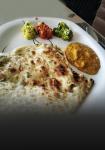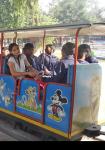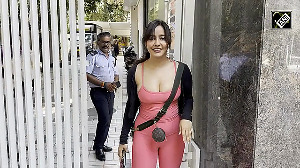Alireza Jafarzadeh told The Associated Press the centrifuges -- which he said are unknown to the UN nuclear watchdog agency -- are ready to be installed at Iran's nuclear facility in Natanz.
Jafarzadeh, who runs Strategic Policy Consulting, a Washington-based think tank focusing on Iran and Iraq, said the information -- which he described as "very recent" came from sources within the Tehran regime who have proven accurate in the past.
Iran resumes uranium enrichment
The Vienna-based International Atomic Energy Agency, which was convening an emergency meeting on Iran later Tuesday, did not immediately comment on the centrifuge allegations. The agency previously had said it was aware of the existence of 164 centrifuges at Natanz.
Under an agreement with the IAEA, Iran had pledged to stop building centrifuges, which can be used to enrich uranium to levels high enough to fuel a nuclear weapon.
New Iran Prez to revive N-plans
Centrifuges also can be used for the peaceful generation of nuclear energy, which Iran insists is its only intention. The United States contends the country is running a covert effort to produce nuclear weapons.
"These 4,000 centrifuge machines have not been declared to the IAEA, and the regime has kept the production of these machines hidden from the inspectors while the negotiations with the European Union have been going on over the past 21 months," Jafarzadeh said in a telephone interview.
None of Jafarzadeh's claims could be independently verified immediately.
Iran on Saturday rejected a package of EU incentives presented by envoys from Britain, France and Germany, and on Monday, it announced it had resumed uranium conversion activities at its nuclear facility at Isfahan.
Jafarzadeh said the centrifuges were manufactured in Isfahan and Tehran, and that construction of buildings, concrete foundations and other work needed to prepare the Natanz facility for centrifuge installation has continued in recent months.
The IAEA's 35-nation board of governors was meeting to assess Iran's latest nuclear
The board, however, appeared unlikely to report Iran to the UN Security Council, which has the authority to impose economic or political sanctions on the regime.
Jafarzadeh said Iran was making "extensive" use of front organizations or companies for the production and testing of centrifuge parts. He identified the companies as Pars Tarash, Kala Electric and Energy Novin, and said all had office space in the downtown Tehran building that houses Iran's Atomic Energy Organization.
Pars Tarash, which has been mentioned in IAEA reports, is using subcontractors to make some centrifuge components, Jafarzadeh alleged.
Those companies "don't know what they're building -- they're just given specifications for some parts -- but the Pars Tarash company knows what it's building: centrifuges," he said.
In 2002, Jafarzadeh -- then a member of the National Council of Resistance of Iran, an exiled opposition group -- disclosed information about two hidden nuclear sites that helped uncover nearly two decades of covert Iranian atomic activity and sparked present fears that Tehran wants to build a bomb.
Jafarzadeh identified the top two engineers allegedly working on centrifuge parts as Morteza Behzad, who works for Iran's atomic agency and heads Pars Tarash, and Ali Karimi, a Defense Ministry engineer with experience in more advanced P2 centrifuges.
"This clearly shows that contrary to Iran's claim that it is transparent and cooperating with the IAEA, it hasn't stopped being deceitful, hasn't stopped lying and hiding its program," Jafarzadeh said by telephone from Washington, DC.
In June 2004, diplomats told AP in Vienna that Iran had acknowledged inquiring about 4,000 magnets needed for uranium enrichment equipment with a European black-market supplier and had dangled the possibility of buying a "higher number."
It was unclear whether the magnets were intended for use in the 4,000 centrifuges Jafarzadeh cited.
A month later, in July 2004, Iran confirmed it had resumed building centrifuges, although it said it had not restarted uranium enrichment.
Britain, France and Germany called Tuesday's emergency IAEA meeting after Tehran announced plans to resume conversion, the process preceding enrichment.
Highly enriched uranium can be used to make weapons; uranium enriched to lower levels is used to produce electricity.






